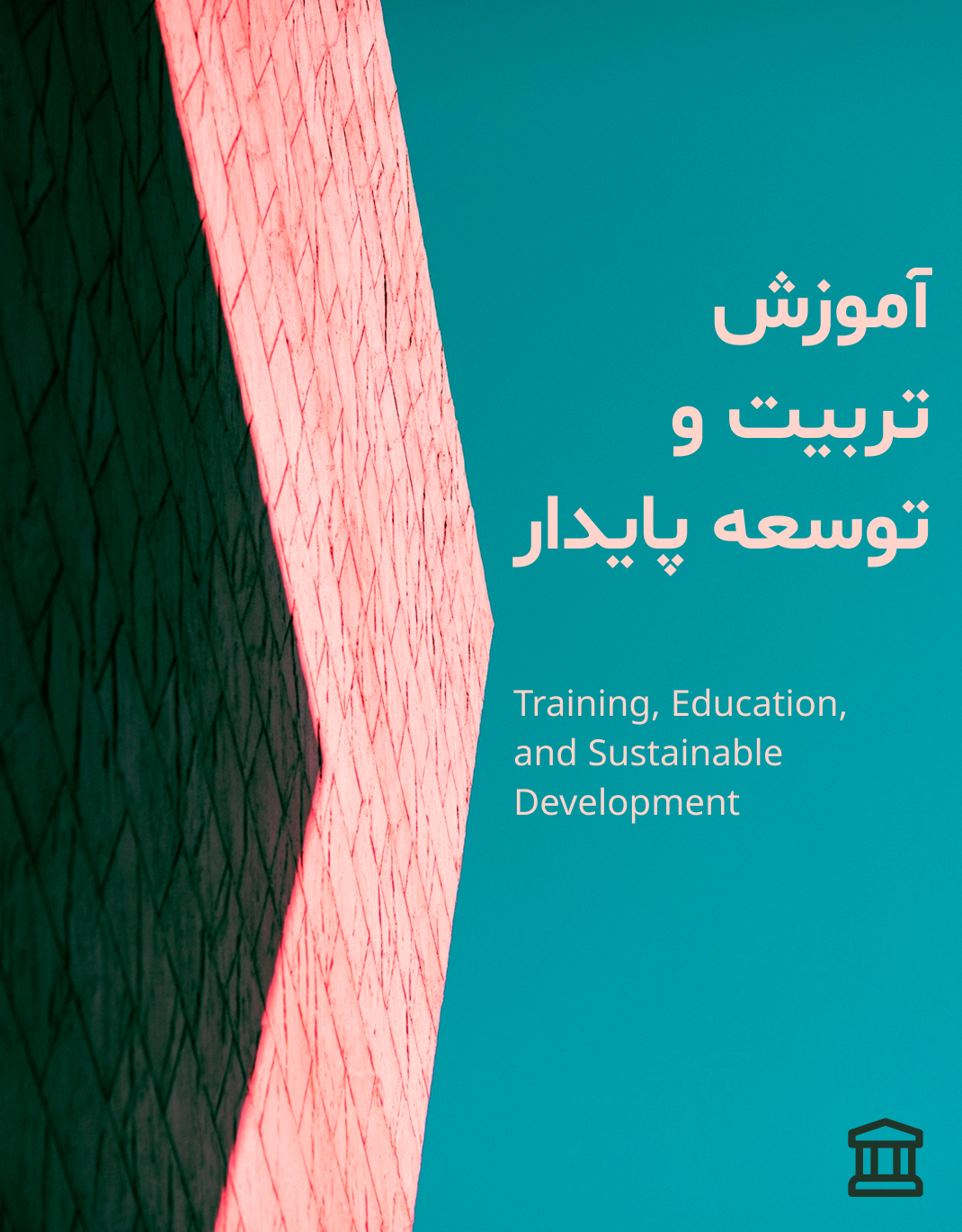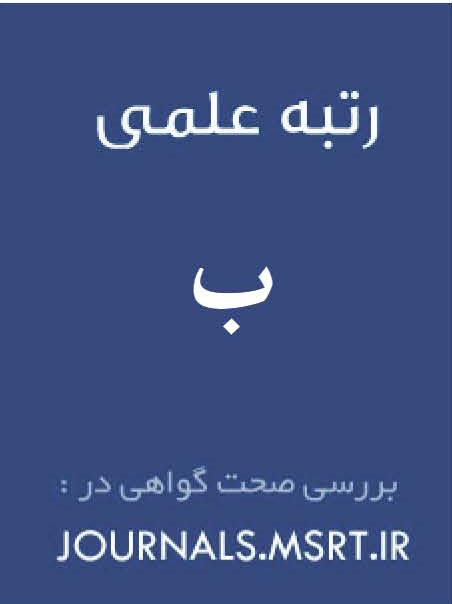طراحی مدل تعالی مدیریت عملکرد منابع انسانی در بنیاد شهید و امور ایثارگران
کلمات کلیدی:
تعالی مدیریت عملکرد منابع انسانی, تعیین اهداف عملکردی, پایش و مربی¬گری, ارزیابی عملکرد, بازبینی و مرور عملکردچکیده
هدف این پژوهش طراحی مدلی جامع برای تعالی مدیریت عملکرد منابع انسانی در بنیاد شهید و امور ایثارگران به منظور ارتقای کارایی، انگیزش، و هماهنگی اهداف فردی و سازمانی است. پژوهش حاضر از نظر هدف کاربردی و از نظر روش، آمیخته (کیفی–کمی) است. در بخش کیفی، با استفاده از روش نمونهگیری هدفمند و همگون، مصاحبههای نیمهساختاریافته با ۲۰ نفر از خبرگان بنیاد شهید انجام شد و دادهها با روش تحلیل تم و تحلیل محتوای جهتدار بررسی گردید. در بخش کمی، جامعه آماری شامل مدیران مناطق و سازمان مرکزی بود که از میان آنها ۱۰۸ نفر بهعنوان نمونه انتخاب و ۷۶ پرسشنامه بازگشت داده شد. دادهها با نرمافزار PLS تحلیل شد و اعتبار مدلها با شاخصهای برازش GOF، R² و Q² ارزیابی گردید. نتایج تحلیل کیفی منجر به طراحی چهار مدل فرعی شامل تعیین اهداف عملکردی، پایش و مربیگری، ارزیابی عملکرد، و بازبینی و مرور عملکرد شد. در مدل تعیین اهداف، مدیران عالی (β=0.78)، مدیران میانی (β=0.86)، سرپرستان (β=0.80) و کارکنان (β=0.42) تأیید شدند. در مدل پایش و مربیگری، تنظیم محتوای آموزشی (β=0.92) و نیازسنجی آموزشی (β=0.86) بیشترین اثر را داشتند. در مدل ارزیابی عملکرد، شاخصهای ارزیابی (β=0.87) و ارزیابیکنندگان (β=0.81) مؤثرترین عوامل بودند. در مدل بازبینی عملکرد، توافق دوجانبه درباره فرآیند جلسه (β=0.90) و حفظ شأن کارکنان (β=0.72) بیشترین نقش را داشتند. نتایج نشان داد که تعالی مدیریت عملکرد در بنیاد شهید مستلزم رویکردی نظاممند است که بر تعیین دقیق اهداف، مربیگری مستمر، ارزیابی منصفانه و بازخورد دوطرفه تأکید دارد. این مدل میتواند به افزایش رضایت شغلی، عدالت ادراکشده و اثربخشی سازمانی کمک کند و بستر لازم برای توسعه سرمایه انسانی را فراهم آورد.
دانلودها
مراجع
Decramer, A., Smolders, C., & Vanderstraeten, A. (2012). Employee performance management culture and system features in higher education: Relationship with employee performance management satisfaction. The International Journal of Human Resource Management, 24(2), 352-371. https://doi.org/10.1080/09585192.2012.680602
Hatami Manesh, M., & Zanjirchi, S. M. (2013). Taguchi Experimental Design: A Realistic Approach to Weighting Employee Performance Evaluation Indicators. Human Resources Management Research, 4(3), 46-67. https://ormr.modares.ac.ir/article_18027.html?lang=en
Hormozi Moghaddam, F., Saffarian Hamedani, S., & Yousefi Saeedabadi, R. (2024). The Impact of Educational Excellence Model Components on the Development of Human Resources in Zahedan's Education Organization [Research Article]. Iranian Journal of Educational Sociology, 7(1), 133-140. https://doi.org/10.61838/kman.ijes.7.1.13
Mohammadi, B., Baghbani, & Hosseini. (2024). Identifying the Impact of Green Human Resource Management and Corporate Social Responsibility (CSR) on Sustainable Performance with the Mediating Role of Organizational Citizenship Behavior for the Environment in Imam Reza (A.S.) Hospital, Ardabil Province. Strategic Studies in Business, 1(2), 1-15.
Mohammadi Yazdi, A., Mirsepasi, N., Mousakhani, M., & Hanifi, F. (2024). Investigating the Status of Human Resource Management Development Indicators Based on Competency Components in the e-Commerce Development Center of the Ministry of Industry, Mines and Trade. Dynamic Management and Business Analysis, 2(4), 180-199. https://doi.org/10.22034/dmbaj.2024.2035663.2412
Mousavi, & Heydari Mousa, N. (2022). Analyzing the Role of Organizational Culture on the Performance of Human Resource Management in Executive Agencies. Human Resource Excellence, 3(3), 38-19. https://journals.iau.ir/article_698492.html
Mwambela, A. (2024). Analysis of the Impact of Recruitment and Selection as a Strategic Human Resource Management Tool on Organisational Performance in Zambia. Journal of Management Studies and Development, 3(03), 193-210. https://doi.org/10.56741/jmsd.v3i03.620
Nowell, L. S., Norris, J. M., White, D. E., & Moules, N. J. (2017). Thematic Analysis: Striving to Meet the Trustworthiness Criteria. International Journal of Qualitative Methods, 16(1), 244-258. https://doi.org/10.1177/1609406917733847
Peretz, H. (2024). Sustainable Human Resource Management and Employees' Performance: The Impact of National Culture. Sustainability, 16, 7281. https://doi.org/10.3390/su16177281
Pradhan, G. M. (2024). Human Resource Management Practices and Organizational Performance: An Empirical Study of Manufacturing and Service Institutions of Nepal. The Batuk, 10(1), 29-38. https://doi.org/10.3126/batuk.v10i1.62296
Pradhan, G. M., Shrestha, P., & Khadka, K. (2023). Human Resource Management Practices and Performance Outcomes: The Case of Service Sector Institutions. Pravaha, 29(1), 48-56. https://doi.org/10.3126/pravaha.v29i1.71404
Rajabi Farjad, H., & Toranian, N. (2024). Identifying Factors Affecting the Performance of Sustainable Human Resources in the Insurance Industry. Dynamic Management and Business Analysis, 2(4), 33-52. https://doi.org/10.22034/dmbaj.2024.2022329.1015
Shafiei, N., & Mazroei, S. (2023). Investigating the effect of green intellectual capital on service performance with the mediating role of strategic capabilities of human resources in educational institutions. Management and Entrepreneurship Studies, 45(9). https://civilica.com/doc/1901644/
Shameradi, S. N., Farjadmand, L., & Hassan Moradi, N. (2021). Presenting a Native Performance Management Model with a Development Approach, Educational Management Innovations, Human Resources in Education in Tehran Province. Educational Management Innovations, 16(3), 1-12. https://sanad.iau.ir/en/Journal/jmte/Article/1109125/FullText
Shenbhagavadivu, T., Poduval, K., & Vinitha, V. (2024). Artificial Intelligence in Human Resource: The Key to Successful Recruiting and Performance Management. Shodhkosh Journal of Visual and Performing Arts, 5(6). https://doi.org/10.29121/shodhkosh.v5.i6.2024.1351
Soltani, I. (2011). Performance Management: The Foundation for Human Resource Development. Arkan Danesh.
Stanton, P., & Pham, H. (2013). Managing Employee Performance in an Emerging Economy: Perceptions of Vietnamese Managers. Asia Pacific Business Review, 20(2), 269-285. https://doi.org/10.1080/13602381.2013.825975
Tadesse, S. (2023). Leadership Behaviour and Human Resource Management Practice Mediation Between Strategic Plan and Performance of Selected Ethiopian Sports Federation. Indonesian Journal of Sport Management, 3(1), 84-92. https://doi.org/10.31949/ijsm.v3i1.4507
Xu, Y., Qian, H., Zhang, M., Tian, F., Zhou, L., & Zhao, S. (2023). Flexible human resource management systems and employee innovation performance in China – based on the moderated mediation effect. Chinese Management Studies, 17(6), 1259-1275. https://doi.org/10.1108/CMS-11-2021-0495
Zhang, K., & Villanueva, L. E. (2024). Human Resource Management Practices and Organizational Performance: Towards a Proposed Employee Engagement Program. Journal of Education and Educational Research, 8(3), 315-328. https://doi.org/10.54097/ypdwj528
دانلود
چاپ شده
ارسال
بازنگری
پذیرش
شماره
نوع مقاله
مجوز
حق نشر 2025 هادی ابراهیمی (نویسنده); فرهاد نژاد ایرانی; یحیی داداش کریمی, غلامرضا رحیمی (نویسنده)

این پروژه تحت مجوز بین المللی Creative Commons Attribution-NonCommercial 4.0 می باشد.

